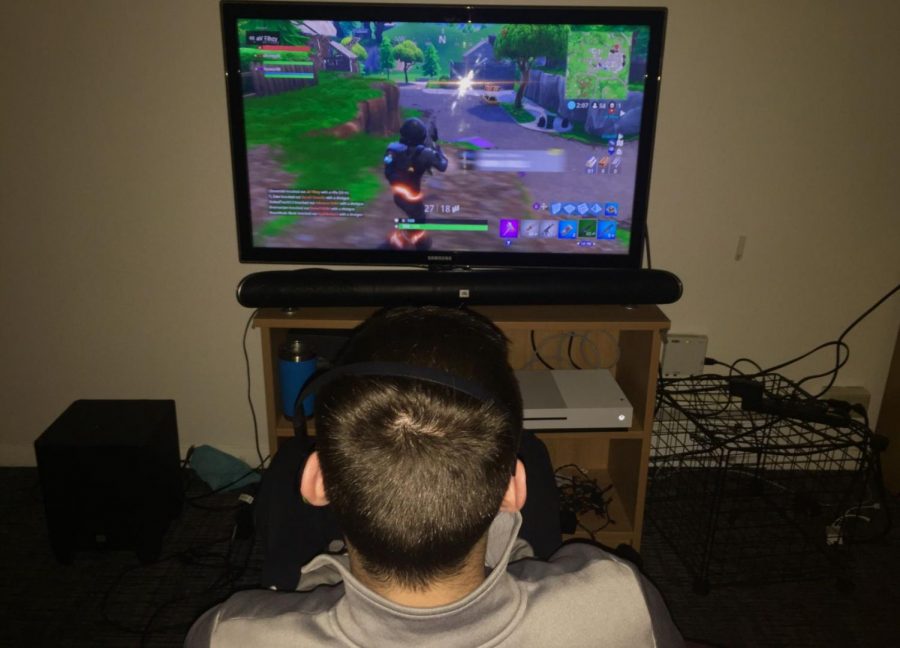Are you addicted to “Fortnite”?
“Fortnite Battle Royale,” a virtual survival game, was released back in July by the Epic Games company, and its popularity has skyrocketed in the past couple months. The game isn’t just the biggest of 2018, but it has become a cultural craze among the younger generations. College students have been one of the adopting groups of this “Fortnite” fad, and many can’t seem to put the Xbox controller down. Players work toward victory by strategizing with teammates or individually to be the last user or team alive out of 100 others. The game is comparable to a “Hunger Games” situation where certain supplies and weapons must be collected in order to defend your player and attack others throughout each round. Epic Games compares it to a formerly popular video game, “Minecraft.”
It seems like a fairly simple and typical video game — so why are users so engrossed in the fantasy of it all? Players report that the treasures they collect throughout the game help them conquer and get closer to a “Victory Royale.” When a treasure chest is opened, a player reacts the same way as they would to a sweet text or funny meme. During this exciting experience, the neurotransmitter dopamine is released in the brain, causing the player to want to experience this delightful activity over and over again. This is where the obsession of playing the game originates. Players continue to seek satisfaction by getting “kills” and working towards first place, driven by the dopamine present in the brain.
Users also claim that they enjoy being able to work with their “squad” of up to four people, verbally communicating through “party chat.” Like many games, “Fortnite” brings friends together so that they can all play at the same time while working toward a mutual goal.
“It’s all about communication in this game,” said sophomore Jack Aube. “In the squad mode you have to talk to each other or else your team will die.”
It is clear this game requires tactical teamwork that can only be achieved through a tiny mic headset. If a player on your team dies, you have the chance to revive them, but in the end you are responsible for your own player. Being able to play with friends makes players more attached because they get to experience a live action video game with other real people, not virtual robots formerly incorporated into the game. This feature makes it distinct from other video games, increasing the intrigue and authenticity.
“Fortnite” continues to be a prominent component in current college culture, dominating the TV screens, laptops, and now smart phones of many students.
When asked about the daily hours spent playing the game, sophomore Danny Hingston paused for a second before concluding, “a lot.”
“I like playing with friends and we always get some good laughs during the game, experiencing the highs and lows together,” Hingston said.
Hingston has the same view of other “Fortnite” fanatics, who believe the obsession stems from the happiness you feel when you discover a new treasure, make a strategical kill, or come in first place.
There are no signs of the “Fortnite” trend slowing down anytime soon considering its addictive qualities and the many updates that the game producers have set since its summer release.
‘It’s definitely at the top of the list for the most entertaining video games our generation has seen,” Aube concluded.






